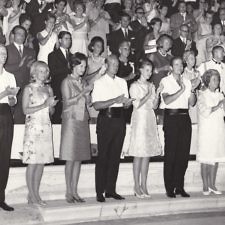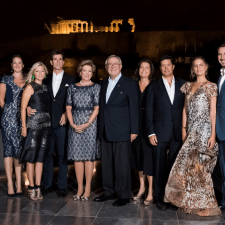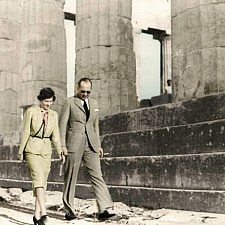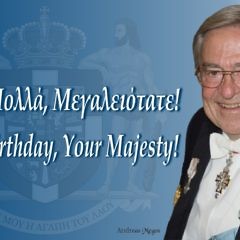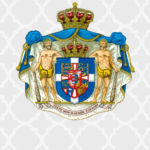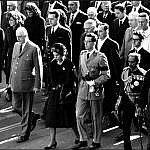Τhe Acropolis of Athens, this unique monument, has always attracted millions of visitors who not only came to admire but also to worship with awe. For most people, visiting The Acropolis constitutes a life’s dream. It is a unique symbol of Greece! It is our pride! The Acropolis was for all Greek Kings, Queens, Princesses and Princes, a form of identity and even today remains so for King Constantine, Queen Anne-Marie and their family, having quoted that «If we return home again we can again have the Acropolis». The sacred rock was for all foreign Kings and Princes the place that they dreamt to visit and when given the chance they always did. We almost had a palace built on the Acropolis!
By Nikos Papakonstantinou
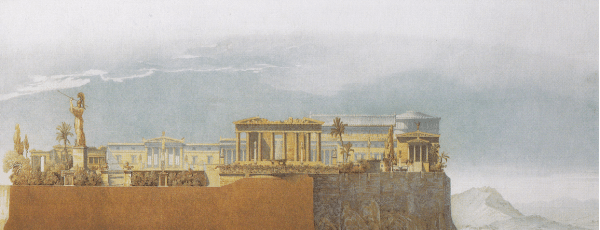
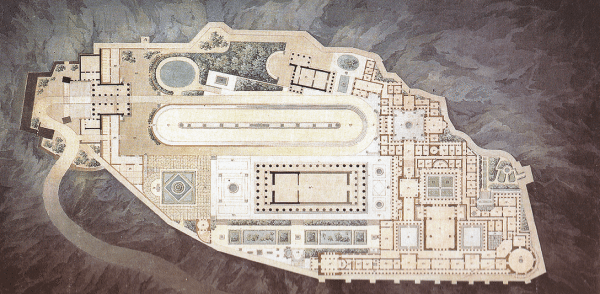
Images from the excellent scrapbook «Palaces in Greece» by Maro Kardamitsis-Adamis
In 1834, the great German architect K.Fr. Schinkel was entrusted the construction of a palace for King Otto, in Athens. The palace for the new King of Greece was to be a symbol of a vision. Therefore Schinkel designed a palace on the Acropolis! It was an amazing composition, where new and ancient buildings, contrasted with a truly inventive and virtuoso manner. It was an exquisite and charming project. A midsummer night’s dream for an architect. Let us not forget that the Acropolis was the residence of the rulers of Athens, during the crusaders occupation, but also during the Turkish occupation. It was from there they exerted control and power, had their homes, their government offices and even their mosques. So why not continue to be the place from where the King of Greece would also exert control? Schinkel’s plan for the palace on the sacred rock was immediately rejected, mainly by King Ludwig of Bavaria (father of Otto). King Otto considered the plan for several days until he also believed that it was impractical but a nice idea. With a sigh he rejected the bold dream.
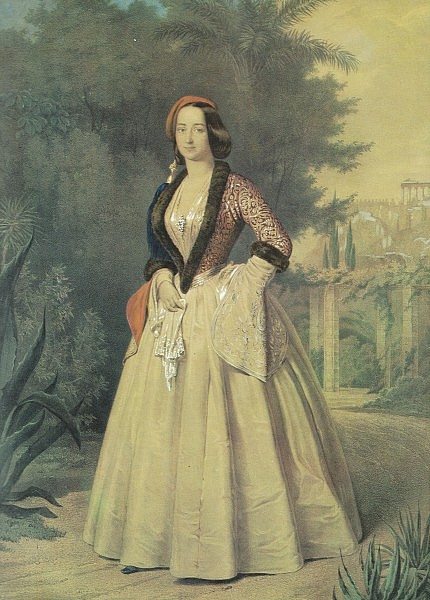
Painting by German artist E. W. Rietschel in 1853, Queen Amalia wearing the costume which bears her name, standing in the Royal garden which she created with so much effort and enthusiasm. In the background the Acropolis, its presence confirming that she was indeed the Queen of Greece!
Quoted from the (extremely valuable) correspondence of Amalia with her father, the Grand Duke Paul- Frederick of Oldenburg, copy, dated 27 January 1841. »Lately I ascended with my brother in law (the successor and the future King Maximilian of Bavaria) the Acropolis and visited all the archaic of the city, which again I found very interesting. The view from the Acropolis is truly wonderful. On that day the weather was wonderful and spread out below our feet was Athens which grows bigger by the day, the splendid mountains, the olive groves, the sea, the islands, and among them the magnificent monuments of antiquity. Even the colour that the marble has taken with the passing of time is wonderful, a golden brownish gold. Since my last visit there have been many excavations made.»
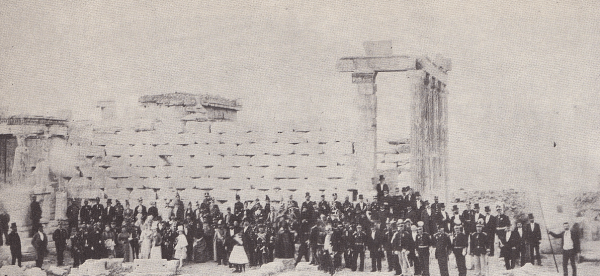
In October 1888, the Silver Jubilee of King George I was celebrated with lots of ceremonies and many guests and the City of Athens hosted a lunch on the Acropolis where an amateur choir sang various melodies throughout the lunch. The occasion was photographed by Petros Moraitis (famous photgrapher of the time). Our photo was taken in front of the Erechteion. The Royal Family and foreign guests can been seen to the left. Shortly after, strong winds caused changes in the weather, darkness and general upheaval. Despite this, crowds celebrated and balloons were let loose over the square of Theseus.
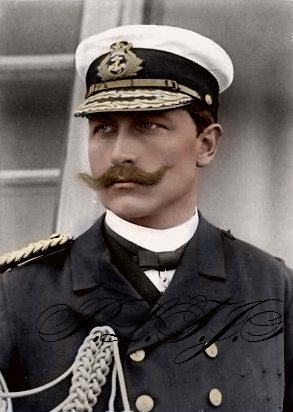
A year later, in October 1889, Athens celebrated the first royal wedding. The joining in matrimony of the Crown Prince Constantine with Princess Sophia of Prussia. Kaiser Wilheim II, brother of the bride, was the last of all the official guests to arrive. He refused the invitation to stay at the place that was prepared for him, prefering to remain on his yacht. Upon arrival at the Palace, he came out to the balcony to greet and thank the crowd. The Athenians followed with excitation. The Kaiser, before turning to the crowd, stood straight and gave a military salute to the Acropolis. The Athenians, flattered and thrilled, regarded this as a sign of great respect. The Kaiser visited the Acropolis and museums.
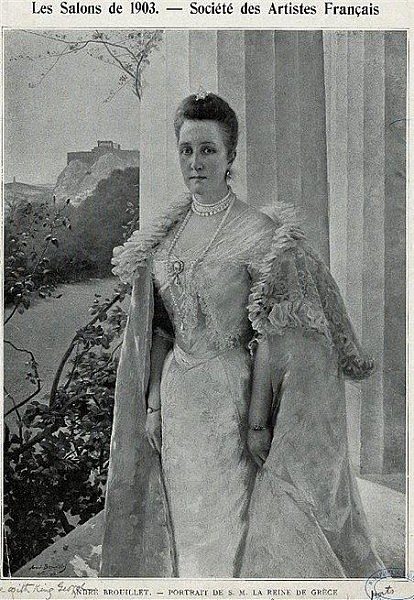
Queen Olga in 1903 by French painter André Brouillet. Immortalized, at the colonade of the Palace of Athens (today’s Greek Parliament) in the background the Acropolis and Philopappou Hill. The Palace provides an impressive view of the Acropolis not only from the official reception rooms but also from the private apartments of the Royal Family.
Ernest Ziller, added the formal dinning room to the first floor of the Palace of the Crown Prince, on Herodes Atticus street. It cintributed to the Palace complimenting and enriching the decoration. Looking out, the large windows of the dinning room framed the Acropolis which could be seen behind the King’s garden. Thus sharing with his guests this unique view, and of course the images of the majestic descent of the Kings and their guests, through the staircase, after the banquets.
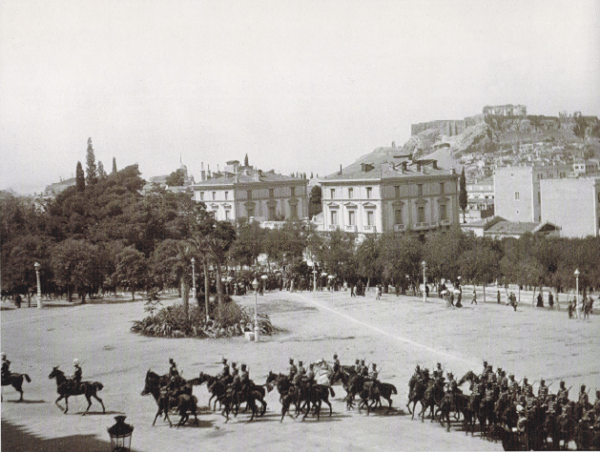
In 1899, Princess Alexandra of Wales, soon to be Queen of Great Britain, could not withstand the temptation and from the window of her palace of her brother King George I, photographed modern Athens, not only with the Acropolis in the background but also the mounted garrison passing by the square.
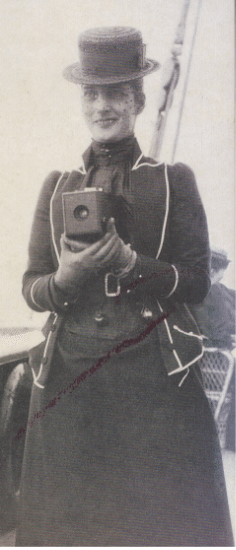
An avid photographer she is accountable for many well taken images of Athens, Tatoi, Corfu, with locals and the Royal Family. many of which have been published.
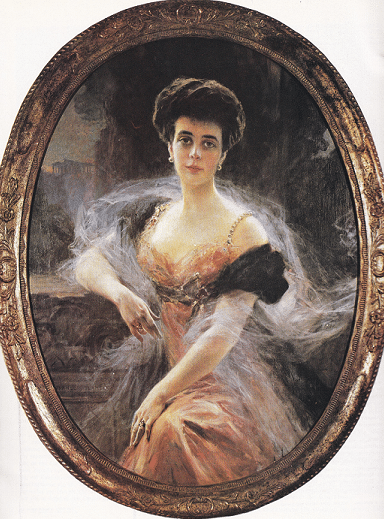
There is a nice view of the Acropolis from the elegant Palace of Prince Nicholas and his wife the Grand Duchess Elena of Russia (nowadays the Italian Embassy situated at the beginning of Queen Sofia’s avenue). This portrait, from 1905 by the French painter François Flameng, shows the great beauty of Elena, complimented by the Acropolis in the background. This portrait has a long and interesting history. Firstly it was placed on the wall of the landing of the central staircase, in the City Palace of Nicholas and Elena. Then in 1923, it was moved to Paris to the apartment of the exiled royal couple. It has not returned to Greece when Princess Elena settled permanently in 1938, but forwarded to Belgrade as a gift to her daughter Olga, wife of the Regent Paul of Yugoslavia and placed in the palace Beli Devor (White Palace). When Paul and Olga made a dramatic departure from Belgrade, in 1941, they were not allowed to take the portrait with them. After the war, Elena, made a request through the Greek Ambassador to then communist Yugoslavia, to have her portrait returned to her. Tito, who was keen to have good relations with Greece, did not object to this request. The portrait was found, without its original frame, in the basement of the Central Bank and returned to Elena in Athens. Immediately Elena commissioned it to Olga, where she believed it belonged. Thus it was hung in the home of exiled Olga, in the Palace of Pratolino, near Florence. This palace has since been sold, and i for one do not know whether the portrait of Elena with the Acropolis, belongs to one of Olga’s two children or it has been sold.
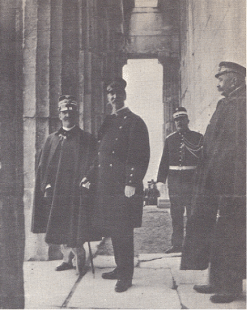
March 1907. King George proudly shows the Parthenon to King Victor-Emmanuel III of Italy, who is in Athens on an official visit. The cold March air surrounding the sacred rock, obliges them to wear coats an cloaks. In July 1900, the heir to the Italian throne, Victor- Emmanuel, was located on a yacht cruising in the Greek seas. His father King Umberto was murdered, and Victor-Emmanuel became King of Italy while sailing in Greek territorial waters.
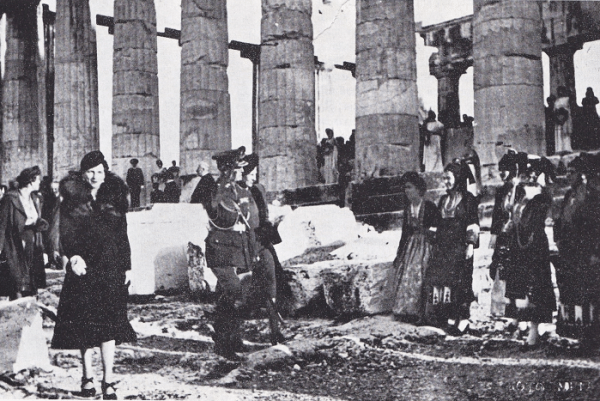
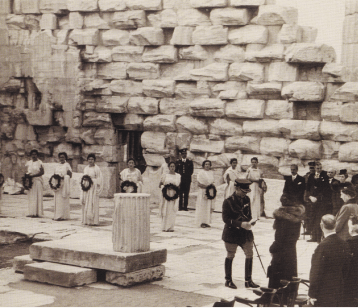
The celebration of 100 years of the Archaeological Society in 1937. The opening ceremony of the several-day celebration took place in the Parthenon. King George II arrived with his two sisters, Queen Helen of Romania and Princess Irene of Greece. Behind them we can distinguish, Grand Duchess Elena of Russia, princess Nicholas. They were welcomed by girls from the Lyceum of Greek Women wearing local traditional costumes. The King in his capacity as President of the Archaeological Society, gave a short speech and commenced the celebrations. Here the girls of the Lyceum of Greek Women wear tunics and hold laurel wreaths.
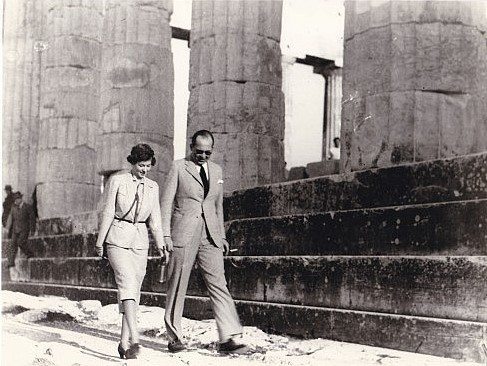
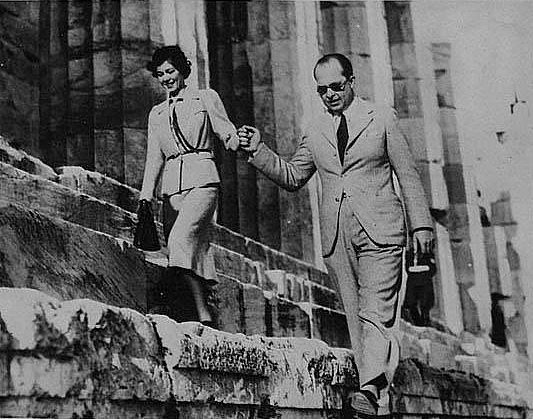
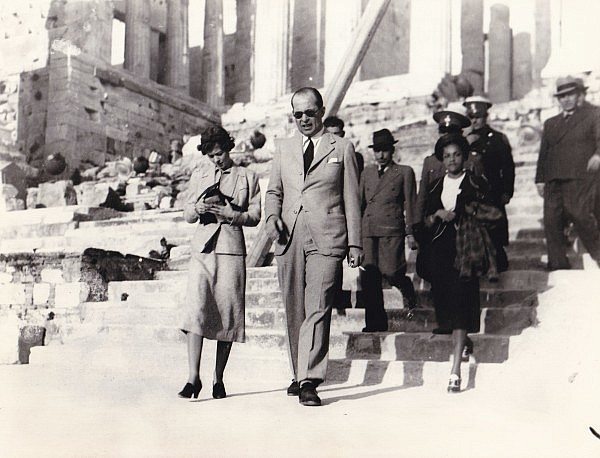
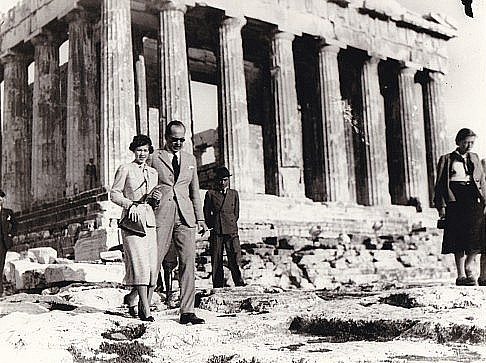
In 1937, Paul, heir to the throne, proudly shows his fiancée around the Acropolis . It is the first time that Princess Frederica visits the Sacred rock. During her lifetime in Greece, she will visit it on numerous occasions to come, not only alone but also with Paul and various guests. All Queens of Greece, should be well acquainted with the Acropolis as it is their home! We note the young, 20-year old princess’s elegant outfit and modern handbag, but also the democratic way they move around among the other tourists.
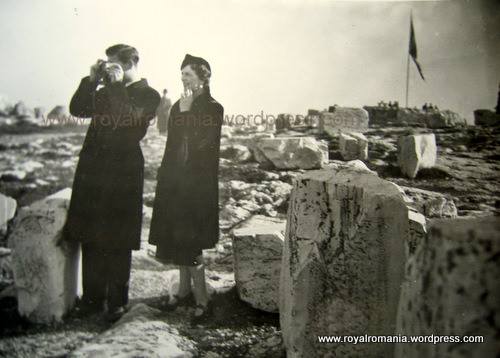
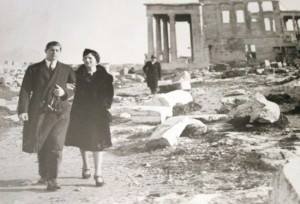
Thanks to my friend Traian Decebal from Bucharest for sharing the photos.
The marriage of Paul and Frederica, in January 1938, brought a multitude of crowned relatives of the couple to Athens . While Paul’s sister was in exile in Florence, Queen Helen of Romania, had the pleasure of meeting her son Crown Prince Michael, who came from Bucharest. How exciting the Fictional adventures of the Romanian crown were! Prince Michael, aged 6, succeeded his grandfather King Ferdinand. Three years later, in 1930, his father Charles returned and claimed the throne banishing Helen. Since then mother and son only met for one month each summer. Their time together during the wedding celebrations in Athens was of course an additional reason for both of them to be joyful. They benefited from their visits to the Acropolis where Helen was able to show and teach her son the beauty of classical Greece.
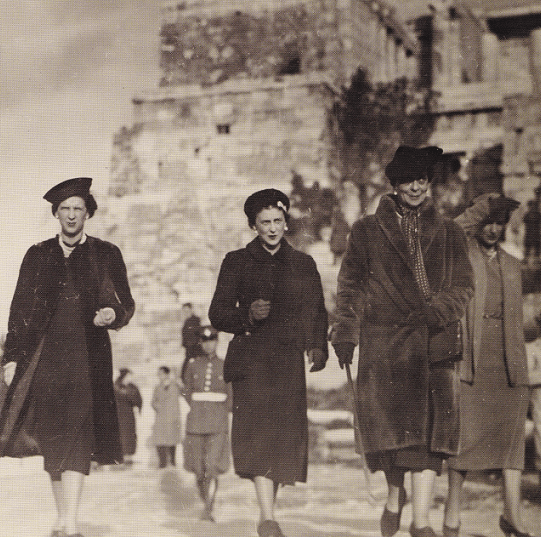
Princess Nicholas, Grand Duchess of Russia with her tree daughters, Elizabeth, Marina and Olga, visiting Acropolis in 1938.
January 1938. Marriage of Crown Prince Paul of Greece with Princess Frederica of Hanover. Some of the guests who took advantage of their stay in Athens to make pilgrimage to the sacred rock, were Princess Nicholas, Grand Duchess Elena of Russia, with her three beautiful, elegant daughters, Olga, Elizabeth and Marina were born and bred Athenians who from a very young age admired the unique beauty and harmony of the Acropolis from the windows of their parent’s palace. Thus, as in times gone by, they desired to visit the Acropolis all together, accompanied by their mother.
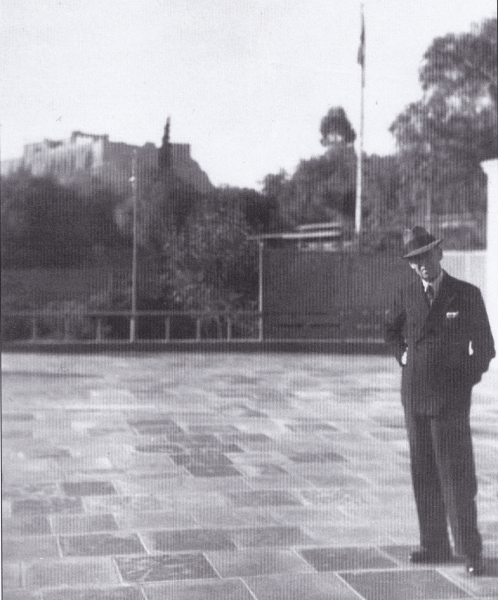
The three sisters returned to their homes, Olga to the Beli Devor palace in Belgrade, Elizabeth to Seefeld Castle in Bavaria and Marina to Kensington Palace in London. They had no sooner arrived at their homes when they had to return immediately to Athens as their father Prince Nikolaos, had died suddenly. It was 8 February 1938.
In the photo we see him pose at the Acropolis, just a few months before his death. We can see the Acropolis as a background.
End of the first part.
(c) text : Nikos Papakonstantinou.
Photos from the private archives of Nikos Papakonstantinou.
♦ It is strictly forbidden to copy this article in whole or part, and to republish in any type of media!

 Share On Facebook
Share On Facebook Tweet It
Tweet It

